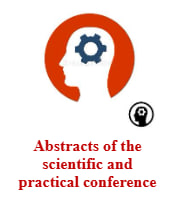| Zaiets O.M., Candidate of Law, Chief Research Fellow in the field of jurisprudence at IPE LLC, https://orcid.org/0000-0002-4426-5241 Problems of criminal analysis: materials of the international scientific and practical conference (Odessa, ODUVS, May 10, 2024). Odesa: ODUVS, 2024. P. 43-48. |
Generalised theses.
Expert systems use symbolic reasoning to solve problems. Symbols are used to represent different types of knowledge, such as facts, concepts, and rules. Unlike conventional programs written to process numerical data, expert systems are designed to process knowledge and can easily work with qualitative data. Conventional programs process data using algorithms, or in other words, a series of well-defined step-by-step operations. An algorithm always performs the same operations in the same order and always provides the exact solution. Conventional programs do not make mistakes, but programmers sometimes make mistakes. Unlike conventional programs, expert systems do not follow a set sequence of steps. They allow for imprecise reasoning and can work with incomplete, uncertain, and fuzzy data. A brilliant expert is only human, so he can make mistakes. This suggests that an expert system designed to work at the level of a human expert must also make mistakes. But we still trust experts, although we recognize that their judgments are sometimes wrong. Similarly, at least in most cases, we can rely on the solutions provided by expert systems, but errors are possible and we should be aware of this.
Theoretically, conventional programs always offer the same “correct” solutions. However, it must be remembered that conventional programs can solve problems if and only if the data is complete and accurate. If the data is incomplete or contains some errors, the conventional program will not provide a solution at all or will be incorrect. Expert systems recognize that the available information may be incomplete or unclear, but they can work in such situations and still come to some reasonable conclusion.
Another important feature that distinguishes expert systems from conventional programs is that knowledge is separated from its processing (the knowledge base and the inference mechanism are separated). A conventional program is a mixture of knowledge and the control structure for processing this knowledge. This mixing leads to difficulties in understanding and reviewing the program code, since any change in the code affects both the knowledge and its processing. In expert systems, knowledge is clearly separated from the processing mechanism. This makes expert systems much easier to create and maintain. When using an expert system shell, the expert simply enters rules into the knowledge base. Each new rule adds new knowledge and makes the expert system smarter. The system can then be easily modified by changing or subtracting rules.
One common characteristic of the information available to human experts is that it is imperfect. The information may be incomplete, contradictory, uncertain, or all three. In other words, the information is often not suitable for solving the problem. However, the expert can cope with these shortcomings and can usually make sound judgments and correct decisions. Expert systems must also be able to deal with uncertainty and make sound conclusions.













